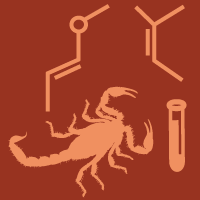Topic Menu
► Topic MenuTopic Editors




Toxins in Medical Toxicology
Topic Information
Dear Colleagues,
The care of poisoned patients is always a challenge considering the lack of proper randomized controlled trials and guideline recommendations. Considering the variety of exposures, a continuous update regarding pathogenic mechanisms and therapeutic measurements is mandatory. We expect papers focused on natural toxins, such as heavy metals, plant toxins, mushrooms, venoms, as well as analgesics, anticoagulants, cardiovascular drugs, carbon monoxide, cyanide, methemoglobinemia, cholinergic agents, psychoactive medications, sedative-hypnotics, alcohols, and withdrawal states.
This Topic aims to offer the possibility to present and discuss novel issues in the field of medical toxicology including papers with both stable and critically ill patients. We hope that new published papers will lead to a better understanding of the pathogenesis of different types of intoxication and secondary organ damage. We look forward to receiving papers dedicated to new therapeutic and intensive care management approaches for these patients.
Prof. Dr. Ioana Marina Grinţescu
Dr. Liliana Mirea
Dr. Radu Ciprian Ţincu
Prof. Dr. Dan E. Corneci
Topic Editors
Keywords
- medical toxicology
- poisoned patients
- natural toxins
- pathogenesis
- intoxication
- secondary organ damage
Participating Journals
| Journal Name | Impact Factor | CiteScore | Launched Year | First Decision (median) | APC |
|---|---|---|---|---|---|

Journal of Xenobiotics
|
6.8 | 5.3 | 2011 | 30 Days | CHF 1600 |

Toxins
|
3.9 | 7.5 | 2009 | 18.9 Days | CHF 2700 |

MDPI Topics is cooperating with Preprints.org and has built a direct connection between MDPI journals and Preprints.org. Authors are encouraged to enjoy the benefits by posting a preprint at Preprints.org prior to publication:
- Immediately share your ideas ahead of publication and establish your research priority;
- Protect your idea from being stolen with this time-stamped preprint article;
- Enhance the exposure and impact of your research;
- Receive feedback from your peers in advance;
- Have it indexed in Web of Science (Preprint Citation Index), Google Scholar, Crossref, SHARE, PrePubMed, Scilit and Europe PMC.

